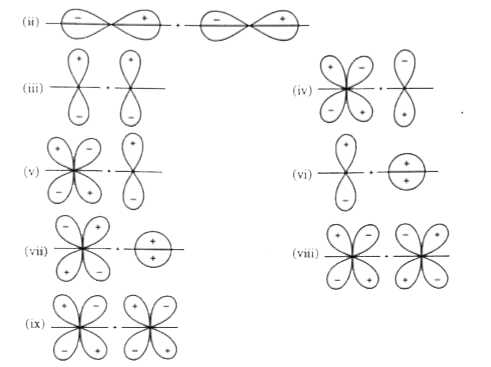Define bonding molecular orbital.
Step-by-Step Solution:
1. Understanding Molecular Orbitals:
- Molecular orbitals are formed when atomic orbitals from different atoms combine. This combination can lead to the formation of different types of molecular orbitals, including bonding and antibonding orbitals.
2. Definition of Bonding Molecular Orbitals:
- Bonding molecular orbitals are specific types of molecular orbitals that result from the constructive interference of atomic orbitals. This means that when two atomic orbitals combine, they can overlap in such a way that their wave functions add together.
3. Formation Criteria:
- For a bonding molecular orbital to form, the atomic orbitals must be of comparable energy levels and must have the proper orientation. This ensures effective overlap, which is crucial for the stability of the resulting molecular orbital.
4. Characteristics of Bonding Molecular Orbitals:
- Bonding molecular orbitals are lower in energy than the original atomic orbitals from which they are formed. This lower energy state contributes to the stability of the molecule.
5. Example:
- A common example of bonding molecular orbitals can be seen in the hydrogen molecule (H₂). The 1s atomic orbitals from two hydrogen atoms combine to form a bonding molecular orbital, which allows the two hydrogen atoms to be held together more stably than they would be separately.
Final Definition:
Bonding molecular orbitals are molecular orbitals formed by the combination of atomic orbitals of comparable energy and proper orientation, resulting in a lower energy state that stabilizes the molecule.
---
- Molecular orbitals are formed when atomic orbitals from different atoms combine. This combination can lead to the formation of different types of molecular orbitals, including bonding and antibonding orbitals.
- Bonding molecular orbitals are specific types of molecular orbitals that result from the constructive interference of atomic orbitals. This means that when two atomic orbitals combine, they can overlap in such a way that their wave functions add together.
- For a bonding molecular orbital to form, the atomic orbitals must be of comparable energy levels and must have the proper orientation. This ensures effective overlap, which is crucial for the stability of the resulting molecular orbital.
- Bonding molecular orbitals are lower in energy than the original atomic orbitals from which they are formed. This lower energy state contributes to the stability of the molecule.
- A common example of bonding molecular orbitals can be seen in the hydrogen molecule (H₂). The 1s atomic orbitals from two hydrogen atoms combine to form a bonding molecular orbital, which allows the two hydrogen atoms to be held together more stably than they would be separately.
Bonding molecular orbitals are molecular orbitals formed by the combination of atomic orbitals of comparable energy and proper orientation, resulting in a lower energy state that stabilizes the molecule.
Topper's Solved these Questions
- CHEMICAL BONDING AND MOLECULAR STRUCTUREBook:PRADEEPChapter:CHEMICAL BONDING AND MOLECULAR STRUCTUREExercise:ADDITIONAL QUESTIONS (SHORT ANSWER QUESTIONS)
Explore 62 Videos
- CHEMICAL BONDING AND MOLECULAR STRUCTUREBook:PRADEEPChapter:CHEMICAL BONDING AND MOLECULAR STRUCTUREExercise:ADDITIONAL QUESTIONS (LONG ANSWER QUESTIONS)
Explore 13 Videos
- CHEMICAL BONDING AND MOLECULAR STRUCTUREBook:PRADEEPChapter:CHEMICAL BONDING AND MOLECULAR STRUCTUREExercise:NCERT EXAMPLAR PROBLEMS ( MULTIPLE CHOICE QUESTIONS BASED ON THE GIVEN COMPREHENSION )
Explore 4 Videos
- APPENDIXBook:PRADEEPChapter:APPENDIXExercise:MODEL TEST PAPER <br> (Section C )
Explore 9 Videos
- CLASSIFICATION OF ELEMENTS AND PERIODICITY IN PROPERTIES Book:PRADEEPChapter:CLASSIFICATION OF ELEMENTS AND PERIODICITY IN PROPERTIES Exercise:Competition Focus (Jee Main and Advanced / Medical Entrance ) ( Assertion - Reason Type Question ) (Type II)
Explore 12 Videos
Similar Questions
Knowledge Check
In case of bonding molecular orbital the electron density is located
Aaway from the space between nuclei of the bonded atomBbetween the nuclei of the bonded atomsCin the outer shellDin the inner orbitalAssertion: The bond order of helium molecule is always zero.
Reason: The number of electrons in bonding molecular orbital and antibonding molecular orbital is equal.AIf both assertion and reason are true and the reason is the correct explanation of the assertionBif both assertion and reason are true but reason is not the correct explanation of the assertionCif assertion is true but reason is falseDif the assertion and reason both are falseTotal number of bonding molecular orbitals in O2 molecule is
A3B4C5D6
A bonding molecular orbital has lesser energy than the corresponding antibonding molecular orbital. Justify
View SolutionThere are some arrangements of atomic orbitals which are given below:

 Then calculate the value of "QtimesR-P'" where P, Q and R are no. of arrangements which give bonding molecular orbitals (positive overlap), antibonding molecular orbitals (negative overlap) and non-bonding molecular orbitals (zero overlap) respectively.
Then calculate the value of "QtimesR-P'" where P, Q and R are no. of arrangements which give bonding molecular orbitals (positive overlap), antibonding molecular orbitals (negative overlap) and non-bonding molecular orbitals (zero overlap) respectively.
View SolutionFind the total number of electrons in bonding molecular orbital of O2−2
View SolutionWhich of the following statements is not correct regarding bonding molecular orbital ?
View SolutionL.C.A.O. Principle is involved in the formationof the molecular orbitals according ot molecular orbital theory. The energy of the bonding molecular orbital is less than that of thecombining atomic orbitals while that of the antibonding molecular orbitals while that of the order (B.O.)=12(Nb−Na) helps in predicting (i) formation of molecules/molecular ions, bond dossociation energy, stability and bond length. Only the molecules or ions with positive B.O. can be formed. These will be diamagnetic if all molecular orbitals are dilled and paramagnetic if one of more are half filled. The atomic prbitals at the time of overlap must have the same symmetry as well.
Bond arder is :
View Solution
